6. Core Feature Operation
Now that we have completed installing and configuring our hardware and software, we are ready to use the neoVI FIRE 2. As discussed at the start of this guide, you can do a lot with this little box, and in this chapter we show you just some of the many applications of the FIRE 2.
Each of the sections contains an example application, and where possible, step-by-step instructions are provided for those who wish to duplicate the results on their own device. The goal of this chapter is specifically to assist those who are new to Intrepid hardware and software, and so simplified examples are provided. Advanced users may wish to skim or even skip this chapter. Note that some sections of this chapter will be written in future updates of the manual.
The examples use Intrepid’s Vehicle Spy 3 Professional, the ideal tool for working with your FIRE 2. Due to the complexity of Vehicle Spy, we only describe the basics necessary for the examples; for full details on this powerful software tool, please see the separate Vehicle Spy documentation
6.1. Monitoring Conventional Vehicle Networks
The most basic use of the neoVI FIRE 2 is to monitor the activity on conventional vehicle networks such as CAN or LIN. Once the device is connected to the network and correctly configured, this is actually very easy to do, assuming you have the right software. In our example we will show how the neoVI FIRE 2 can monitor CAN traffic on a bench network using Vehicle Spy 3
Assuming that your network already has CAN messages being transmitted by other devices, we can monitor that traffic with these simple steps:
1. Launch Vehicle Spy: Start Vehicle Spy by double-clicking its icon or selecting it from the Windows Start Menu.
2. Select neoVI FIRE 2: On the Logon Screen, select the neoVI FIRE 2 if it does not already have a checkmark next to it. To do so, right-click the device name and choose Select Hardware (Figure 79)
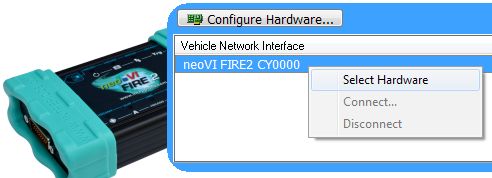
Figure 79: Selecting the neoVI FIRE 2 from the Logon Screen of Vehicle Spy.
3. Go Online: Press the blue arrow button in the top left corner of Vehicle Spy.
The program will go online and automatically switch to Messages View, showing you the incoming traffic. An example can be found in Figure 80, which shows CAN messages that are being transmitted to the FIRE 2 by another network interface tool. By default, identical messages will be grouped together; if you prefer to see the messages in chronological order, press the Scroll button located just above the message display.
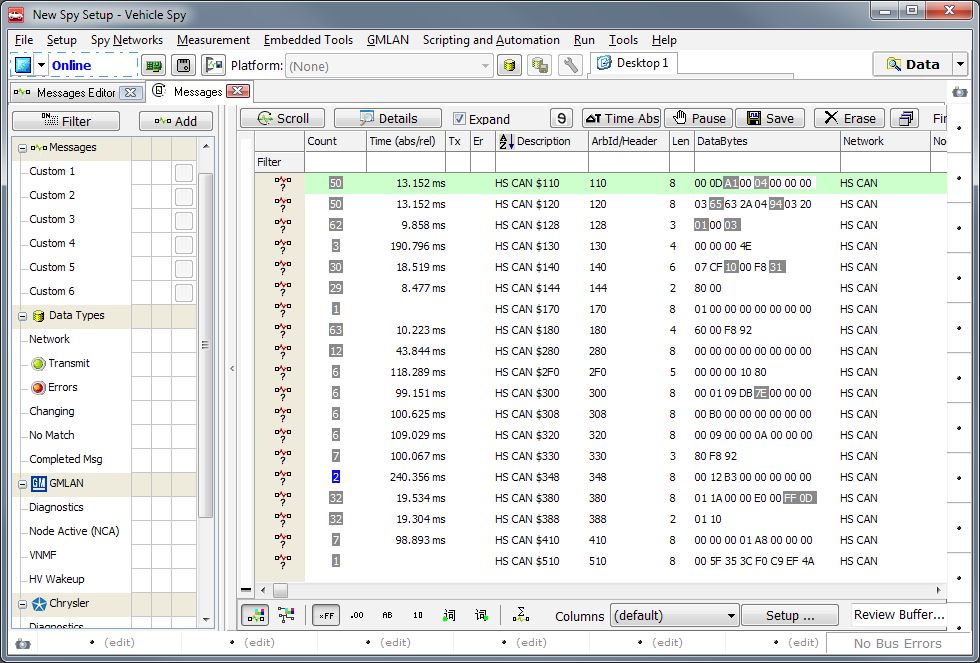
Figure 80: Monitoring Message Traffic in Vehicle Spy Using the neoVI FIRE 2.
Notice that the CAN messages are shown in their raw form, with arbitration IDs and data bytes. If you have a database matching the message traffic being monitored, you can load it into a platform and Vehicle Spy will decode the messages and show the signals within each. For details on how to accomplish this, please consult the Vehicle Spy documentation.
6.2. Transmitting on Conventional Vehicle Networks
In addition to monitoring network traffic with the neoVI FIRE 2, we can also easily generate and transmit traffic of our own. We’ll show how this is done by creating and then transmitting a custom CAN message on the HS CAN channel.
First, make sure the neoVI FIRE 2 is connected to your vehicle network. Then follow these steps to create and transmit a message:
1. Launch Vehicle Spy: Start Vehicle Spy by double-clicking its icon or selecting it from the Windows Start Menu.
2. Select neoVI FIRE 2: On the Logon Screen, select the neoVI FIRE 2 if it is not already selected: right-click the device name and choose Select Hardware (see Figure 79).
3. Load Messages Editor: Select Messages Editor from the Spy Networks menu.
4. Select Transmit Messages: Click the Transmit button, found in the blue bar.
5. Create Transmit Message: To the right of the drop-down box that currently says “HS
CAN”, click the  button.
button.
Vehicle Spy will generate a new HS CAN transmit message called “Tx Message HS CAN 1”, preset with default values. The program window should now appear similar to Figure 81.
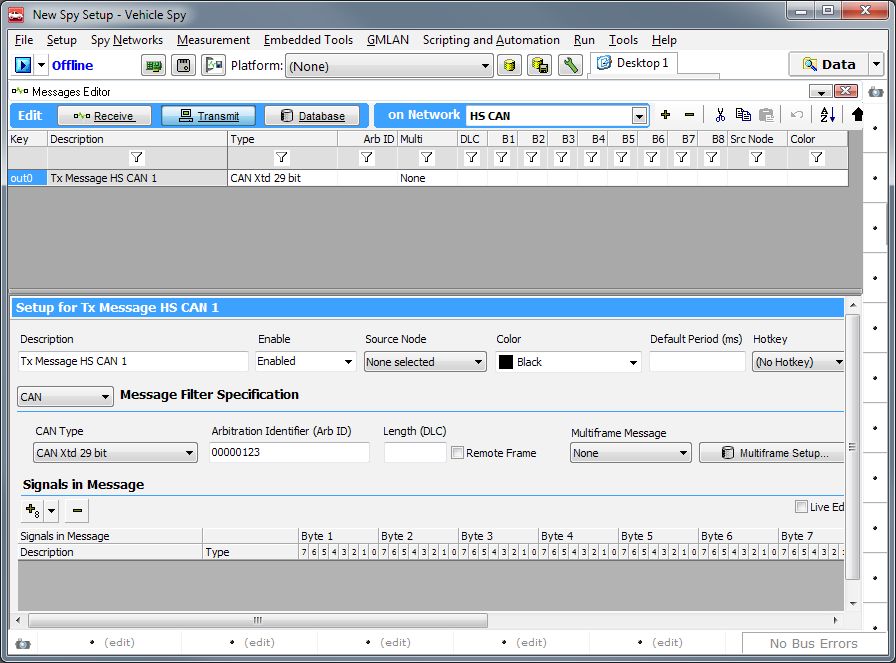
Figure 81: A Default Transmit Message Created in Vehicle Spy.
Next, we will change the default message by assigning an arbitration ID to it, and then adding a signal and renaming it.
6. Set Message to Arbitration ID 123: Under the Arb ID column for the message, enter the value “123”.
7. Add Message Signal: In the middle of the screen, find “Signals in Message”; just below
this click the  button. A signal called “Signal 0” is created.
button. A signal called “Signal 0” is created.
8. Rename Message Signal: Under the Description column, double-click “Signal 0” and change the name to “Engine Speed”.
With these changes, the message should now appear as seen in Figure 82.
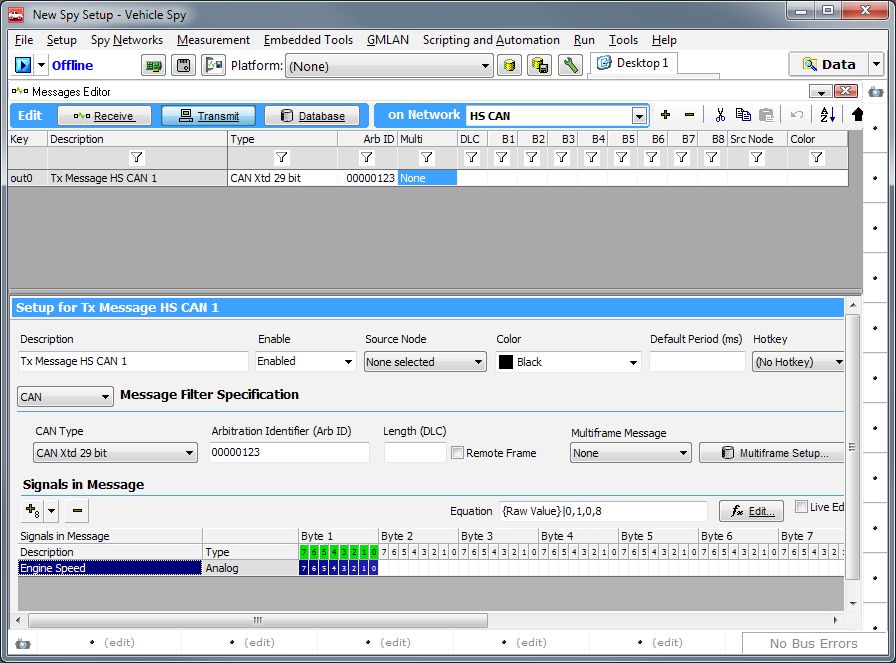
Figure 82: Vehicle Spy Transmit Message with Arb ID and Named Signal.
We’ll now use the Tx Panel to specify a simple static value to send in that signal, and then instruct Vehicle Spy to transmit the message periodically.
9. Load Tx Panel: Select Tx Panel from the Spy Networks menu.
10. Select Message: Click on “HS CAN Message 1” under Description on the left side of the screen.
11. Select Transmission Rate: The message by default is set to “Periodic” transmissions, but the rate says “None”. Double-click in this field, scroll down and choose “0.100”.
12. Set Signal Data Value: On the right side of the screen, double-click under Value for the Engine Speed signal, and enter “207”. (You may need to first move the vertical divider bar that separates the two halves of the Tx Panel, by clicking on it and dragging it to the left.)
The Tx Panel in Vehicle Spy should now appear similar to Figure 83. Our custom message is ready to transmit
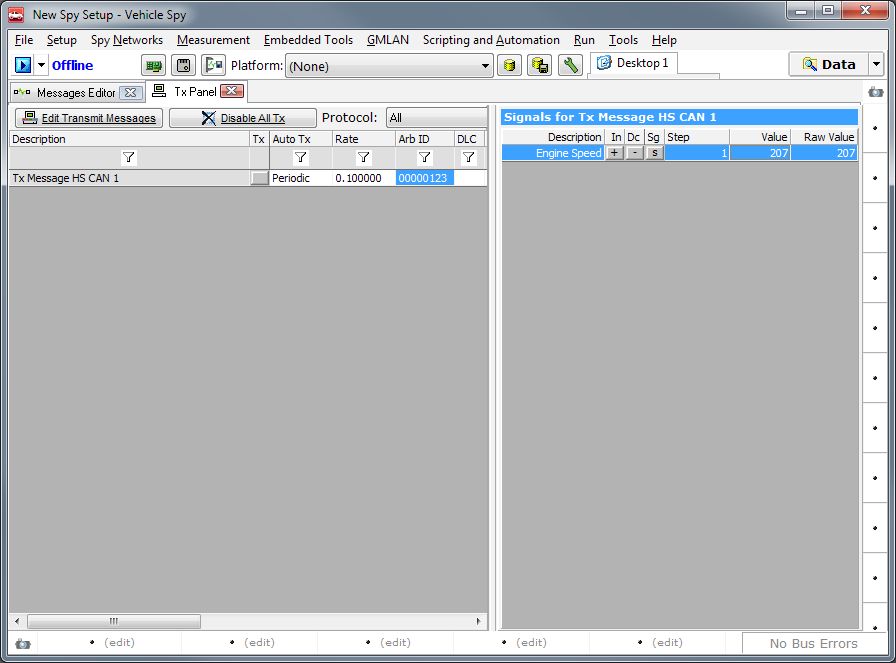
Figure 83: Vehicle Spy Tx Panel with 100 Millisecond Periodic Rate Set and Signal Value Assigned.
Let’s now switch to Messages View and go online to see our message being transmitted on the CAN network.
13. Switch to Messages View: Select Messages from the Spy Networks menu.
14. Go Online: Press the blue arrow button in the top left corner of Vehicle Spy.
You should now see a new “Message HS CAN 1” message show up about every 100 ms (Figure 84). Notice the green dot under the Tx column, which labels this as a transmitted message.
15. Expand Message: Press the + sign to the left of “Message HS CAN 1”.
Vehicle Spy shows you the Engine Speed signal with the value we set in both decimal (207) and hexadecimal (0xCF).
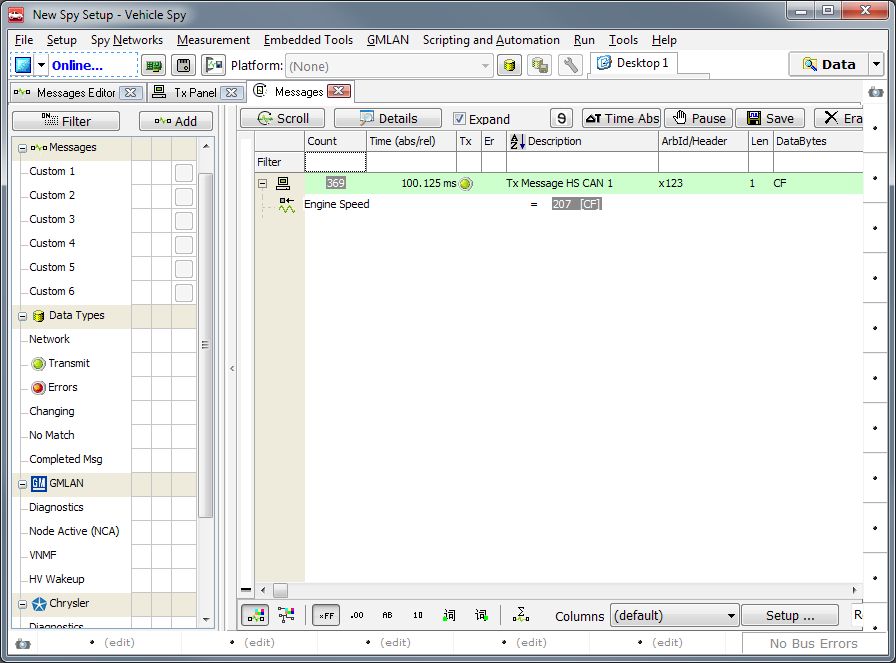
Figure 84: Vehicle Spy Messages View Showing Custom Transmitted Message and Signal.
Naturally, in a real example we would want to create a more realistic depiction of engine speed. This can be done in a variety of ways in Vehicle Spy, such as writing a function block program to describe engine behavior and control message transmission.
6.3. Interfacing to Automotive Ethernet (BroadR-Reach / 100BASE-T1)
The neoVI FIRE 2 can be used to monitor and transmit on a BroadR-Reach (100BASE-T1) Automotive Ethernet network, with the help of a device that changes the BroadR-Reach PHY into the standard 10/100 Ethernet PHY used by the FIRE 2. Intrepid sells an inexpensive tool for this exact purpose, called the RAD-Moon media converter.
Figure 85 shows the neoVI FIRE 2 hookup diagram of Figure 46 modified to illustrate a typical Automotive Ethernet application. The RJ-45 jack on the FIRE 2 network interface cable is connected to the RAD-Moon’s RJ-45 jack using a standard Ethernet cable. The BroadR-Reach ECU or network is connected to the RAD-Moon’s Mini50 connector on the other side of the converter. Power for the RAD-Moon is provided via the USB host slot on the FIRE 2, allowing the FIRE 2 to power the RAD-Moon on or off as needed.
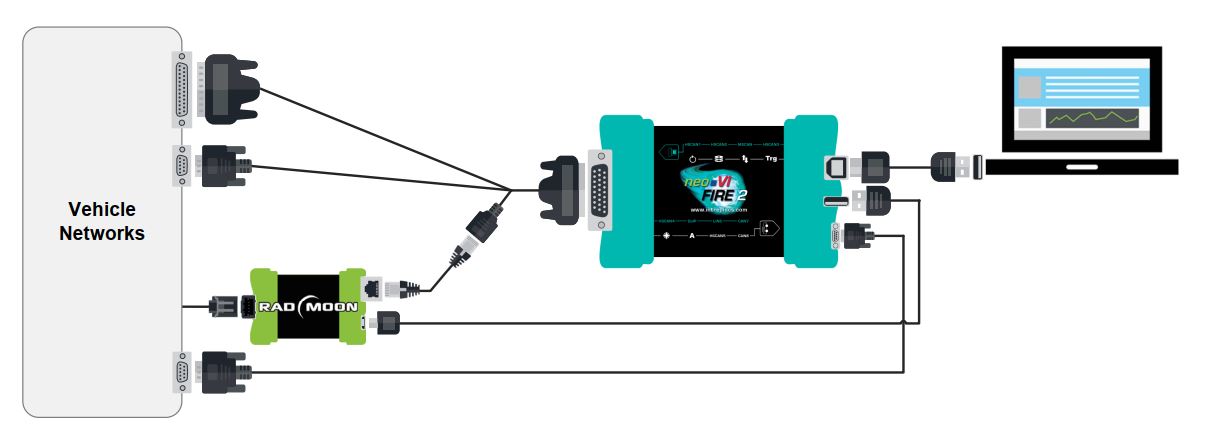
Figure 85: neoVI FIRE 2 Hookup Diagram for Automotive Ethernet Using RAD-Moon Media Converter.
6.4. Using the Ethernet Interface for DoIP and XCP
This section will be detailed in a future version of this manual.
6.5. Using Miscellaneous I/O Channels
This section will be detailed in a future version of this manual.
6.6. Standalone Logging
This section will be detailed in a future version of this manual.
6.7. CoreMini Scripting
This section will be detailed in a future version of this manual.